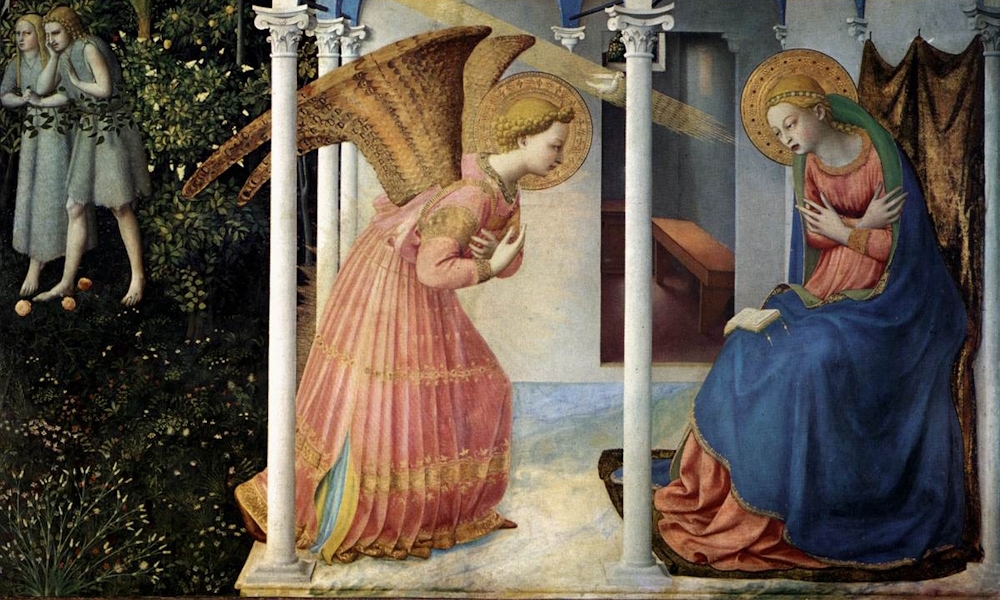
Art helps us understand the depth of Mary’s love for Christ
At this time of the year, it is easy for us to imagine some variation of a “Madonna and Child” Christmas card, but there is so much more to Mary’s life. Second only to Jesus in terms of the number of works of art representing her life, I chose two pieces to bookend what we know of Mary — the Annunciation by Fra Angelico and the Pieta by Michaelangelo. The fullness of her life experiences lies between these events and beyond.
At this time of the year, it is easy for us to imagine some variation of a “Madonna and Child” Christmas card, but there is so much more to Mary’s life. Second only to Jesus in terms of the number of works of art representing her life, I chose two pieces to bookend what we know of Mary — the Annunciation by Fra Angelico and the Pieta by Michaelangelo. The fullness of her life experiences lies between these events and beyond.
Fra Angelico painted several versions of the Annunciation, but what really distinguishes his work from other artists’ interpretations is the inclusion of Adam and Eve being driven from the Garden of Eden. On the left side of the painting, they are easily recognized because of their shamed expressions, the apples at their feet and the angel above them. This echoes the belief that Mary is the “new Eve”, undoing Eve’s yes to sin with her own grace-filled yes to God’s will. In Mary’s lap is a book that represents the Jewish law and her faith. The expression on her face communicates both her sense of wonder —“How can this be…?” (Lk 1:32) — and her acceptance of the grace-filled moment. The ray of light emanating from the upper left corner shows the hand of God, and a dove, representing the Holy Spirit, is closer to Mary. The head of Christ is carved on the arch above the center pillar. The vaulted ceiling above Mary is painted to represent a night sky with stars, a motif often used for church ceilings representing the firmament or celestial realm of God.
Michaelangelo created the Pieta when he was only 23 years old and the true tour de force, Michaelangelo’s sculpture changed the way art was regarded from then on. The dramatic depth and draping of Mary’s clothing, the high polish of the marble and the uncanny perfection of the human body, down to the veins in Chrit’s arms, set this work apart from the mundane and into the realm of the divine. Clearly, Michaelangelo wanted to convey the intimacy of a mother grieving her dead son. In order to have a grown man being held in the arms of a woman, he had to reduce the size of Jesus’ body in relation to Mary’s. He also used the draped cloth to create the illusion of a wider base. Mary’s right hand touches her mantle, not Jesus’ skin directly, perhaps to suggest the sacredness of his body and her hand realistically shifts the flesh of his arm and chest. Her left arm and hand are making an enigmatic gesture. Is she questioning yet again, “How can this be?” or is she offering up his death? Remember, Michaelangelo chose the time before the Resurrection, which changed everything. While Jesus’ face is too peaceful for having undergone a torturous death and Mary’s face is too youthful for a woman with a 33-year old-son, the sheer beauty of the art allows us to share that moment in time.
Mark Landers is a parishioner of St. Austin Parish in Austin and a member of the Diocesan Fine Arts Council. He and his wife, Christina, own and operate Landers’ Studio, a woodworking shop and design studio. They design and construct custom furniture and high-quality architectural piecework.




